Opinion & Analysis
Imagine what drivers will look like in 30 years
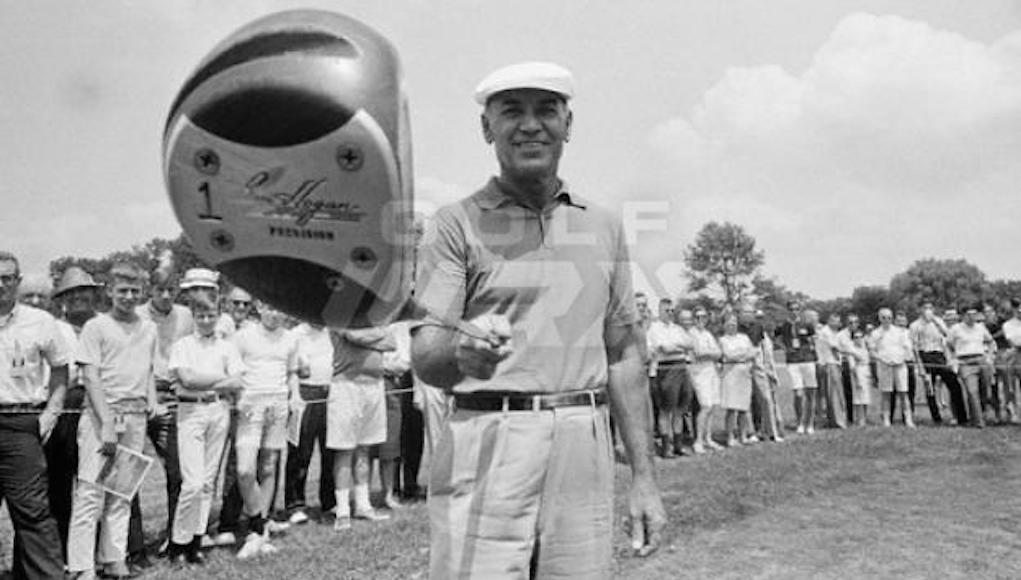
At one point in the early 1980s, Dan Pohl was the longest driver on the PGA Tour, averaging 274 yards with the Big Dog. As a teenage spectator watching from afar, I only became aware of him and his prodigious drives at the 1982 Masters. He tore up the back nine and managed to get into a playoff with Craig Stadler, the eventual winner. One thing I did pick up on was that he was using a “metal wood,” and the commentators were analyzing how much this ground-breaking new technology added to his length. I mean, a metal wood! It was the stuff of tomorrow; space-age cool!
This contradiction in terms (how can a wood be made of metal?) was offset by the results. Longer, straighter and more forgiving drives (see, the message hasn’t changed that much in nearly 35 years) resulted from this Pittsburgh Persimmon driver, as one brand so adeptly named it. The sheer audaciousness of this technological breakthrough!
It coincided with the advent of graphite shafts as well. Materials like boron and graphite were enabling club designers to make shafts lighter, stronger and longer, which in turn were delivering more distance with different ball flights. It must have been a golden time for golfing physicists and engineers. No longer were driver heads hand-carved out of blocks of persimmon. These hollow metal heads were designed on computers and cast in volume production lines with high yields and consistency. They offered strength and versatility. The marketing guys were shaping up for a field day. How could they lose?
Very quickly the golf shops filled up with these new metal woods. Persimmon had been around forever and still had its place for the purists, but once Ely Callaway got on board with his Big Bertha creation in 1991, we effectively waved goodbye to wooden-headed clubs forever.
I’d made my mind up that this was the future, so I set about as a 15-year-old aspiring golfer to acquire one. At that age it’s all about the shiny stuff, right? For the previous 12 months, I was learning the game with a Ben Hogan persimmon driver, my pride and joy. It was considered at the time “state of the art” with good quality persimmon and a fancy “speed slot.”
According to a Hogan ad, the slot was a “new and original idea to increase club head speed. This is not a theory, but a fact proven by a well-known physicist!” In terms of specs it said “1” on the sole; I had no idea what loft it was, only that it had a stiff shaft. I got it because it felt nice and I went off and learned how to hit it. The biggest modification I had was putting a new grip on it. The face of the club had four screws, and when you caught one the expression “hit it on the screws” became a very memorable feeling.
The Hogan stick was dropped quicker than a hot potato when I discovered metal. I soon managed to snag my first metal wood, a Titleist PT 9-degree driver from the second-hand bin in my local golf shop. I can’t remember exactly how much I paid for it, though; yes, it was that long ago. It had a steel shaft with a gleaming silver-and-grey color scheme. Man, that head was huge compared to my old Hogan. And from the day and hour I got the new metal driver, I never looked back to a wooden driver. I was sold. I was able to really wallop that thing, and over the next couple of years I nearly wore it out. I could even pick it off the fairway very successfully when my eye was in.
I quickly added a metal three wood — first from Titleist and then from Wilson Staff — and a metal five wood from Mizuno, which was an early predecessor to the hybrid. It had a small head and I was able to hit that thing from almost any lie. It had a gold boron shaft, too. To me, it was so high tech that it almost felt like cheating.
Over the years, I gamed the later offerings from Titleist as well as the latest clubs from TaylorMade, Callaway, Tour Edge, Cobra and Ping. I’ve tried most and make a point of keeping up to date with the latest technology. But how much more technical has it become? It’s interesting that Dan Pohl’s leading stats are now laughable compared with numbers of Tony Finau, who hits it an average of 314 yards per poke. That’s 40 yards folks!
There are now titanium heads, carbon heads, composite heads, face inserts, moveable weights, speed slots, and variable lofts and lies. Launch monitor technology has given us access to knowledge and a level of customization far beyond what we once knew. My specs from 20 years ago were “8.5 degrees with a stiff shaft.” Now I can print off a sheet that looks like it was generated by NASA highlighting my smash factor, spin rates, launch angles, ball speed and what I had for breakfast. A pro can now recommend the perfect club for me.
Over the last 10 years, the big buzz has been the spring-like effect known as Coefficient of Restitution (COR). Coupled with head size getting to space-hopper proportion, the authorities decided to step in to limit what was possible. So COR is now limited to 0.830 and the maximum club head size to 460 cubic centimeters in an attempt to “maintain the challenge of the game.”
It’s now all about materials science, manufacturing tolerances and optimizing shape for maximum speed. Scientists have access to nanomaterials that are used in aerospace construction. Callaway just co-designed their latest offering with help from Boeing! Moveable weight systems coupled with variable lofts and lies means we can tweak our drivers to our heart’s content if an effort to optimize a high-launch, low-spin, straight drive. We now also have our own custom colors and decals.
Imagine what our drivers will look like in 30 years! Oh, and then there is the “frigging golf ball”, as Jack so eloquently put it, but that’s a whole ‘nother rant!
- LIKE82
- LEGIT11
- WOW5
- LOL8
- IDHT4
- FLOP5
- OB1
- SHANK67
Opinion & Analysis
The Wedge Guy: What really makes a wedge work? Part 2

In my last post, I explained the basic performance dynamics of “smash factor” and “gear effect” as they apply to your wedges and your wedge play success. If you missed that post, you can read it here.
At the end of that post, I promised “part 2” of this discussion of what makes a wedge work the way it does. So, let’s dive into the other two components of any wedge – the shaft and the grip.
It’s long been said that the shaft is “the engine of the golf club.” The shaft (and grip) are your only connection to all the technologies that are packed into the head of any golf club, whether it be a driver, fairway, hybrid, iron, wedge or even putter.
And you cannot ignore those two components of your wedges if your goal is optimizing your performance.
I’ve long been an advocate of what I call a “seamless transition” from your irons into your wedges, so that the feel and performance do not disconnect when you choose a gap wedge, for example, instead of your iron-set-matching “P-club.” In today’s golf equipment marketplace, more and more golfers are making the investment of time and money to experience an iron fitting, going through trial and error and launch monitor measuring to get just the right shaft in their irons.
But then so many of those same golfers just go into a store and choose wedges off the retail display, with no similar science involved at all. And that’s why I see so many golfers with a huge disconnect between their custom-fitted irons, often with lighter and/or softer graphite or light steel shafts . . . and their off-the-rack wedges with the stock stiff steel ‘wedge flex’ shaft common to those stock offerings.
If your wedge shafts are significantly heavier and stiffer than the shafts in your irons, it is physically impossible for you to make the same swing. Period.
To quickly improve your wedge play, one of the first things you can do is have your wedges re-shafted with the same or similar shaft that is in your irons.
There’s another side of that shaft weight equation; if you don’t have the forearm and hand strength of a PGA Tour professional, you simply cannot “handle” the same weight shaft that those guys play to master the myriad of ‘touch shots’ around the greens.
Now, let’s move on to the third and other key component of your wedges – the grips. If those are not similar in shape and feel to the grips on your irons, you have another disconnect. Have your grips checked by a qualified golf club professionals to make sure you are in sync there.
The one caveat to that advice is that I am a proponent of a reduced taper in your wedge grips – putting two to four more layers of tape under the lower hand, or selecting one of the many reduced taper grips on the market. That accomplishes two goals for your scoring.
First, it helps reduce overactive hands in your full and near-full wedge swings. Quiet hands are key to good wedge shots.
And secondly, it provides a more consistent feel of the wedge in your hands as you grip down for those shorter and more delicate shots around the greens. And you should always grip down as you get into those touch shots. I call it “getting closer to your work.”
So, if you will spend as much time selecting the shafts and grips for your wedges as you do choosing the brand, model, and loft of them, your scoring range performance will get better.
More from the Wedge Guy
- The Wedge Guy: What really makes a wedge work? Part 1
- The Wedge Guy: The easiest-to-learn golf basic
- The Wedge Guy: Golf mastery begins with your wedge game
- LIKE3
- LEGIT3
- WOW0
- LOL1
- IDHT1
- FLOP0
- OB0
- SHANK3
19th Hole
Vincenzi’s 2024 Wells Fargo Championship betting preview: Tommy Fleetwood ready to finally land maiden PGA Tour title

The PGA Tour season ramps back up this week for another “signature event,” as golf fans look forward to the year’s second major championship next week.
After two weaker-field events in the Zurich Classic and the CJ Cup Byron Nelson, most of the best players in the world will head to historic Quail Hollow for one of the best non-major tournaments of the year.
Last season, Wyndham Clark won the event by four shots.
Quail Hollow is a par-71 measuring 7,521 yards that features Bermudagrass greens. The tree-lined, parkland style course can play quite difficult and features one of the most difficult three-hole stretches in golf known as “The Green Mile,” which makes up holes 16-18: two mammoth par 4s and a 221-yard par 3. All three holes have an average score over par, and water is in play in each of the last five holes on the course.
The field is excellent this week with 68 golfers teeing it up without a cut. All of the golfers who’ve qualified are set to tee it up, with the exception of Scottie Scheffler, who is expecting the birth of his first child.
Past Winners at Quail Hollow
- 2023: Wyndham Clark (-19)
- 2022: Max Homa (-8)
- 2021: Rory McIlroy (-10)
- 2019: Max Homa (-15)
- 2018: Jason Day (-12)
- 2017: Justin Thomas (-8) (PGA Championship)
- 2016: James Hahn (-9)
- 2015: Rory McIlroy (-21)
Key Stats For Quail Hollow
Strokes Gained: Approach
Strokes gained: Approach will be extremely important this week as second shots at Quail Hollow can be very difficult.
Total SG: Approach Over Past 24 Rounds
- Akshay Bhatia (+1.16)
- Tom Hoge (+1.12)
- Corey Conners (+1.01)
- Shane Lowry (+0.93)
- Austin Eckroat (+0.82)
Strokes Gained: Off the Tee
Quail Hollow is a long course on which it is important to play from the fairway. Both distance and accuracy are important, as shorter tee shots will result in approach shots from 200 or more yards. With most of the holes heavily tree lined, errant drives will create some real trouble for the players.
Strokes Gained: Off the Tee Past 24 Rounds:
- Ludvig Aberg (+0.73)
- Rory McIlroy (+0.69)
- Xander Schauffele (+0.62)
- Viktor Hovland (+0.58)
- Chris Kirk (+0.52)
Proximity: 175-200
The 175-200 range is key at Quail Hollow. Players who can hit their long irons well will rise to the top of the leaderboard.
Proximity: 175-200+ over past 24 rounds:
- Cameron Young (28’2″)
- Akshay Bhatia (29’6″)
- Ludvig Aberg (+30’6″)
- Sam Burns (+30’6″)
- Collin Morikawa (+30’9″)
SG: Total on Tom Fazio Designs
Players who thrive on Tom Fazio designs get a bump for me at Quail Hollow this week.
SG: Total on Tom Fazio Designs over past 36 rounds:
- Patrick Cantlay (+2.10)
- Rory McIlroy (+1.95)
- Tommy Fleetwood (+1.68)
- Austin Eckroat (+1.60)
- Will Zalatoris (+1.57)
Strokes Gained: Putting (Bermudagrass)
Strokes Gained: Putting has historically graded out as the most important statistic at Quail Hollow. While it isn’t always predictable, I do want to have it in the model to bump up golfers who prefer to putt on Bermudagrass.
Strokes Gained: Putting (Bermudagrass) Over Past 24 Rounds:
- Taylor Moore (+0.82)
- Nick Dunlap (+.76)
- Wyndham Clark (+.69)
- Emiliano Grillo (+.64)
- Cam Davis (+.61)
Course History
This stat will incorporate players that have played well in the past at Quail Hollow.
Course History over past 36 rounds (per round):
- Rory McIlroy (+2.50)
- Justin Thomas (+1.96)
- Jason Day (+1.92)
- Rickie Fowler (+1.83)
- Viktor Hovland (+1.78)
Wells Fargo Championship Model Rankings
Below, I’ve compiled overall model rankings using a combination of the five key statistical categories previously discussed — SG: Approach (27%), SG: Off the Tee (23%), SG: Total on Fazio designs (12%), Proximity: 175-200 (12%), SG: Putting Bermuda grass (12%), and Course History (14%).
- Wyndham Clark
- Rory McIlroy
- Xander Schauffele
- Shane Lowry
- Hideki Matsuyama
- Viktor Hovland
- Cameron Young
- Austin Eckroat
- Byeong Hun An
- Justin Thomas
2024 Wells Fargo Championship Picks
Tommy Fleetwood +2500 (DraftKings)
I know many out there have Tommy fatigue when it comes to betting, which is completely understandable given his lack of ability to win on the PGA Tour thus far in his career. However, history has shown us that players with Fleetwood’s talent eventually break though, and I believe for Tommy, it’s just a matter of time.
Fleetwood has been excellent on Tom Fazio designs. Over his past 36 rounds, he ranks 3rd in the field in Strokes Gained: Total on Fazio tracks. He’s also been incredibly reliable off the tee this season. He’s gained strokes in the category in eight of his past nine starts, including at The Masters, the PLAYERS and the three “signature events” of the season. Tommy is a golfer built for tougher courses and can grind it out in difficult conditions.
Last year, Fleetwood was the first-round leader at this event, firing a Thursday 65. He finished the event in a tie for 5th place.
For those worried about Fleetwood’s disappointing start his last time out at Harbour Town, he’s bounced back nicely after plenty of poor outings this season. His T7 at the Valero Texas Open was after a MC and T35 in his prior two starts and his win at the Dubai Invitational came after a T47 at the Sentry.
I expect Tommy to bounce back this week and contend at Quail Hollow.
Justin Thomas +3000 (DraftKings)
It’s been a rough couple of years for Justin Thomas, but I don’t believe things are quite as bad as they seem for JT. He got caught in the bad side of the draw at Augusta for last month’s Masters and has gained strokes on approach in seven of his nine starts in 2024.
Thomas may have found something in his most recent start at the RBC Heritage. He finished T5 at a course that he isn’t the best fit for on paper. He also finally got the putter working and ranked 15th in Strokes Gained: Putting for the week.
The two-time PGA champion captured the first of his two major championships at Quail Hollow back in 2017, and some good vibes from the course may be enough to get JT out of his slump.
Thomas hasn’t won an event in just about two years. However, I still believe that will change soon as he’s been one of the most prolific winners throughout his PGA Tour career. Since 2015, he has 15 PGA Tour wins.
Course history is pretty sticky at Quail Hollow, with players who like the course playing well there on a regular basis. In addition to JT’s PGA Championship win in 2017, he went 4-1 at the 2022 Presidents Cup and finished T14 at the event last year despite being in poor form. Thomas can return as one of the top players on the PGA Tour with a win at a “signature event” this week.
Cameron Young +3500 (DraftKings)
For many golf bettors, it’s been frustrating backing Cam Young this season. His talent is undeniable, and one of the best and most consistent performers on the PGA Tour. He just hasn’t broken through with a victory yet. Quail Hollow has been a great place for elite players to get their first victory. Rory McIlroy, Anthony Kim, Rickie Fowler and Wyndham Clark all notched their first PGA Tour win at Quail.
Throughout Cam Young’s career, he has thrived at tougher courses with strong fields. This season, he finished T16 at Riviera and T9 at Augusta National, demonstrating his preference of a tough test. His ability to hit the ball long and straight off the tee make him an ideal fit for Quail Hollow, despite playing pretty poorly his first time out in 2023 (T59). Young should be comfortable playing in the region as he played his college golf at Wake Forest, which is about an hour’s drive from Quail Hollow.
The 26-year-old has played well at Tom Fazio designs in the past and ranks 8th in the field in Strokes Gained: Total on those courses in his last 36 rounds. Perhaps most importantly, this season, Young is the best player on the PGA Tour in terms of proximity from 175-200 in the fairway, which is where a plurality and many crucial shots will come from this week.
Young is an elite talent and Quail Hollow has been kind to players of his ilk who’ve yet to win on Tour.
Byeong Hun An +5000 (FanDuel)
Byeong Hun An missed some opportunities last weekend at the CJ Cup Byron Nelson. He finished T4 and played some outstanding golf, but a couple of missed short putts prevented him from getting to the winning score of -23. Despite not getting the win, it’s hard to view An’s performance as anything other than an overwhelming success. It was An’s fourth top-ten finish of the season.
Last week, An gained 6.5 strokes ball striking, which was 7th in the field. He also ranked 12th for Strokes Gained: Approach and 13th for Strokes Gained: Off the Tee. The South Korean has been hitting the ball so well from tee to green all season long and he now heads to a golf course that should reward his precision.
An’s driver and long irons are absolute weapons. At Quail Hollow, players will see plenty of approach shots from the 175-200 range as well as some from 200+. In his past 24 rounds, Ben ranks 3rd in the field in proximity from 175-200 and 12th in proximity from 200+. Playing in an event that will not end up being a “birdie” fest should help An, who can separate from the field with his strong tee to green play. The putter may not always cooperate but getting to -15 is much easier than getting to -23 for elite ball strikers who tend to struggle on the greens.
Winning a “signature event” feels like a tall task for An this week with so many elite players in the field. However, he’s finished T16 at the Genesis Invitational, T16 at The Masters and T8 at the Arnold Palmer Invitational. The 32-year-old’s game has improved drastically this season and I believe he’s ready to get the biggest win of his career.
- LIKE8
- LEGIT4
- WOW1
- LOL1
- IDHT0
- FLOP0
- OB0
- SHANK1
19th Hole
Vincenzi’s LIV Golf Singapore betting preview: Course specialist ready to thrive once again

After another strong showing in Australia, LIV Golf will head to Sentosa Golf Club in Singapore looking to build off of what was undoubtedly their best event to date.
Sentosa Golf Club sits on the southern tip of Singapore and is one of the most beautiful courses in the world. The course is more than just incredible scenically; it was also rated 55th in Golf Digest’s top-100 courses in 2022-2023 and has been consistently regarded as one of the best courses in Asia. Prior to being part of the LIV rotation, the course hosted the Singapore Open every year since 2005.
Sentosa Golf Club is a par 71 measuring 7,406 yards. The course will require precise ball striking and some length off the tee. It’s possible to go low due to the pristine conditions, but there are also plenty of hazards and difficult spots on the course that can bring double bogey into play in a hurry. The Bermudagrass greens are perfectly manicured, and the course has spent millions on the sub-air system to keep the greens rolling fast. I spoke to Asian Tour player, Travis Smyth, who described the greens as “the best [he’s] ever played.”
Davis Love III, who competed in a Singapore Open in 2019, also gushed over the condition of the golf course.
“I love the greens. They are fabulous,” the 21-time PGA Tour winner said.
Love III also spoke about other aspects of the golf course.
“The greens are great; the fairways are perfect. It is a wonderful course, and it’s tricky off the tee.”
“It’s a long golf course, and you get some long iron shots. It takes somebody hitting it great to hit every green even though they are big.”
As Love III said, the course can be difficult off the tee due to the length of the course and the trouble looming around every corner. It will take a terrific ball striking week to win at Sentosa Golf Club.
In his pre-tournament press conference last season, Phil Mickelson echoed many of the same sentiments.
“To play Sentosa effectively, you’re going to have a lot of shots from 160 to 210, a lot of full 6-, 7-, 8-iron shots, and you need to hit those really well and you need to drive the ball well.”
Golfers who excel from tee to green and can dial in their longer irons will have a massive advantage this week.
Stat Leaders at LIV Golf Adelaide:
Fairways Hit
1.) Louis Oosthuizen
2.) Anirban Lahiri
3.) Jon Rahm
4.) Brendan Steele
5.) Cameron Tringale
Greens in Regulation
1.) Brooks Koepka
2.) Brendan Steele
3.) Dean Burmester
4.) Cameron Tringale
5.) Anirban Lahiri
Birdies Made
1.) Brendan Steele
2.) Dean Burmester
3.) Thomas Pieters
4.) Patrick Reed
5.) Carlos Ortiz
LIV Golf Individual Standings:
1.) Joaquin Niemann
2.) Jon Rahm
3.) Dean Burmester
4.) Louis Oosthuizen
5.) Abraham Ancer
LIV Golf Team Standings:
1.) Crushers
2.) Legion XIII
3.) Torque
4.) Stinger GC
5.) Ripper GC
LIV Golf Singapore Picks
Sergio Garcia +3000 (DraftKings)
Sergio Garcia is no stranger to Sentosa Golf Club. The Spaniard won the Singapore Open in 2018 by five strokes and lost in a playoff at LIV Singapore last year to scorching hot Talor Gooch. Looking at the course setup, it’s no surprise that a player like Sergio has played incredible golf here. He’s long off the tee and is one of the better long iron players in the world when he’s in form. Garcia is also statistically a much better putter on Bermudagrass than he is on other putting surfaces. He’s putt extremely well on Sentosa’s incredibly pure green complexes.
This season, Garcia has two runner-up finishes, both of them being playoff losses. Both El Camaleon and Doral are courses he’s had success at in his career. The Spaniard is a player who plays well at his tracks, and Sentosa is one of them. I believe Sergio will get himself in the mix this week. Hopefully the third time is a charm in Singapore.
Paul Casey +3300 (FanDuel)
Paul Casey is in the midst of one of his best seasons in the five years or so. The results recently have been up and down, but he’s shown that when he’s on a golf course that suits his game, he’s amongst the contenders.
This season, Casey has finishes of T5 (LIV Las Vegas), T2 (LIV Hong Kong), and a 6th at the Singapore Classic on the DP World Tour. At his best, the Englishman is one of the best long iron players in the world, which makes him a strong fit for Sentosa. Despite being in poor form last season, he was able to fire a Sunday 63, which shows he can low here at the course.
It’s been three years since Casey has won a tournament (Omega Dubai Desert Classic in 2021), but he’s been one of the top players on LIV this season and I think he can get it done at some point this season.
Mito Pereira +5000 (Bet365)
Since Mito Pereira’s unfortunate demise at the 2022 PGA Championship, he’s been extremely inconsistent. However, over the past few months, the Chilean has played well on the International Series as well as his most recent LIV start. Mito finished 8th at LIV Adelaide, which was his best LIV finish this season.
Last year, Pereira finished 5th at LIV Singapore, shooting fantastic rounds of 67-66-66. It makes sense why Mito would like Sentosa, as preeminent ball strikers tend to rise to the challenge of the golf course. He’s a great long iron player who is long and straight off the tee.
Mito has some experience playing in Asia and is one of the most talented players on LIV who’s yet to get in the winner’s circle. I have questions about whether or not he can come through once in contention, but if he gets there, I’m happy to roll the dice.
Andy Ogletree +15000 (DraftKings)
Andy Ogletree is a player I expected to have a strong 2024 but struggled early in his first full season on LIV. After failing to crack the top-25 in any LIV event this year, the former U.S. Amateur champion finally figured things out, finished in a tie for 3rd at LIV Adelaide.
Ogletree should be incredible comfortable playing in Singapore. He won the International Series Qatar last year and finished T3 at the International Series Singapore. The 26-year-old was arguably the best player on the Asian Tour in 2023 and has been fantastic in the continent over the past 18 months.
If Ogletree has indeed found form, he looks to be an amazing value at triple-digit odds.
- LIKE3
- LEGIT3
- WOW1
- LOL2
- IDHT0
- FLOP2
- OB0
- SHANK0
-

 19th Hole3 weeks ago
19th Hole3 weeks agoJustin Thomas on the equipment choice of Scottie Scheffler that he thinks is ‘weird’
-

 19th Hole3 weeks ago
19th Hole3 weeks ago‘Absolutely crazy’ – Major champ lays into Patrick Cantlay over his decision on final hole of RBC Heritage
-

 19th Hole2 weeks ago
19th Hole2 weeks agoLET pro gives detailed financial breakdown of first week on tour…and the net result may shock you
-

 19th Hole3 days ago
19th Hole3 days agoReport: LIV star turns down PGA Championship invite due to ‘personal commitments’
-

 19th Hole1 week ago
19th Hole1 week agoGary Player claims this is what ‘completely ruined’ Tiger Woods’ career
-

 Whats in the Bag2 weeks ago
Whats in the Bag2 weeks agoTeam McIlowry (Rory McIlroy, Shane Lowry) winning WITBs: 2024 Zurich Classic
-

 19th Hole3 weeks ago
19th Hole3 weeks agoTaylorMade signs 15-year-old AJGA Rolex Junior Player of the Year to an NIL contract
-

 Equipment1 week ago
Equipment1 week agoGolf fans left surprised by LIV’s choice of course for its 2024 individual championship event



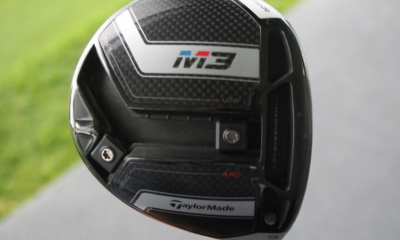

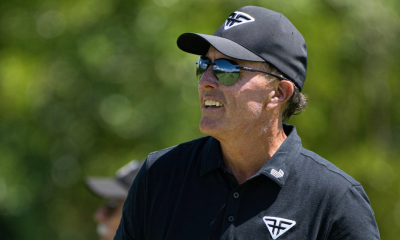



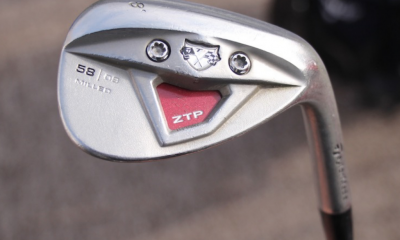



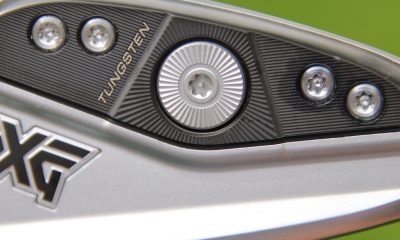

















Christosterone
Sep 1, 2016 at 3:08 pm
This:
http://www.persimmongolfclubs.com/acatalog/JOE-ANDERSON-DISPLAY-CLUB.jpg
Wm
Aug 27, 2016 at 10:31 am
In the not too distant future they will be marketing customized one piece drivers where the head will be fused to the shaft. The marketers will claim more stability and better feel.
RAT
Aug 26, 2016 at 10:15 am
They should take the gloves off and let it be NO LIMITS on balls and clubs !
Tim
Aug 26, 2016 at 12:54 am
I would bet there are still some big changes coming the the shafts. They are going to give us shafts that flex and kick straight as the club face with tips that stay on line no matter how fast or had you hit the ball. I would bet we may even see shafts that have some kind of adjust ability for the amateur golfer to play around with…and then there will be lots of grip advancements with adjust ability in them also….lots of things to work on for the OEM’s to keep us buying the next hot new gimmick.
Chuck
Aug 25, 2016 at 9:49 pm
Others have already mentioned it; I am not so sure that the difference between a 2016 driver and a 2046 driver will be so dramatic, as the difference between a 1980 driver and a 2010 driver.
Just think about it; for 30 years — more, actually — tournament/tour golf saw virtually NO change in drivers. In the 1970’s and 80’s, the absolute rage among tour players and elite amateurs was to find very pure MacGregor drivers designed by player/designer Toney Penna from the 1950’s. Just about every major championship in golf for four decades was won with a persimmon driver that was generally about 20 years old. Jack Nicklaus was winning majors in the 1970’s with a 3-wood from the 1950’s. Players used to say that it was harder to find a good driver than it was to find a good wife. And once they found a gamer, they played with it until it broke. Then they got it repaired. And only after a club broke about three more times would they ever give up on it.
J.B.
Aug 25, 2016 at 8:09 pm
Materials since will dictate the future of clubs. With additive manufacturing, the face will be a graduated blend of materials to optimize the sweet spot to make the entire face respond at the edge of the rules. Clubs will stop being a head and a shaft, rather a single piece. The single piece clubs will be so well weighted and aero optimized that grandma will be showing 95+ mph swing speeds.
Professor smizzle
Aug 26, 2016 at 11:06 am
This man knows^^^^
The future is not development of the head, but of an entire one piece club optimised for each player.
mhendon
Aug 25, 2016 at 3:13 pm
I doubt I’ll be alive 30 years from now much less still playing.
Justin
Aug 25, 2016 at 1:22 pm
Technology is allowing more players to play the game effectively. I truly believe that more golfers could have competed on tour back in the day had the technology been better. The technology helps the bombers hit it straighter and helps everyone catch up to the pure ball strikers.
Id be happy if everything stayed the way it was. I can deal with guys like Justin Thomas carrying the ball 300+ yards in the air, but when you have 50+ guys on tour start to carry it the distance that Dustin, Bubba, and Rory do now…. that’s when we need to worry.
dsd
Aug 25, 2016 at 12:50 pm
just remember in the 200 years prior to the last 30 years club tech remained relatively unchanged. Similar to any industrial revolution, I don’t expect leaps and bounds of improvements over and over again.
Bruce Ferguson
Aug 25, 2016 at 12:44 pm
I would love to see new designs which would incorporate the dispersion/distance characteristics of today’s 460cc driver in a 360-400cc head. Whatever the future has in store, please don’t let it be even larger driver heads!
Tom
Aug 25, 2016 at 7:47 pm
M2 3 wood
Jnak97
Aug 27, 2016 at 1:08 am
Aeroburner mini driver
alfriday
Aug 25, 2016 at 12:41 pm
The last thirty or so years have been a transformative period in driver tech. I doubt the next thirty will go through anything nearly as drastic. The size of drivers has been limited. The spring effect has been limited. Newer, more exotic materials are available, but most are cost prohibitive. As companies push the envelop on the set performance limits, the changes will by necessity be less drastic.
The Real Swanson
Aug 25, 2016 at 12:39 pm
“Imagine what clubs looked like 30 years ago.” would be a more appropriate title.
Johnnylongballz
Aug 25, 2016 at 12:09 pm
Hopefully they don’t look that much different than today’s drivers. I hope that the USGA/R&A can limit technology’s impact on the game, maybe even roll it back a bit.
KJ
Aug 25, 2016 at 5:32 pm
C’mon now. Manufacturers are always going to be looking for something new, something different. It happens in every single industry with all products, Its called capitalism and the chase for the almighty dollar.